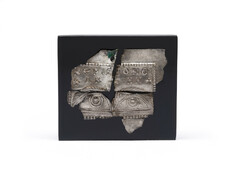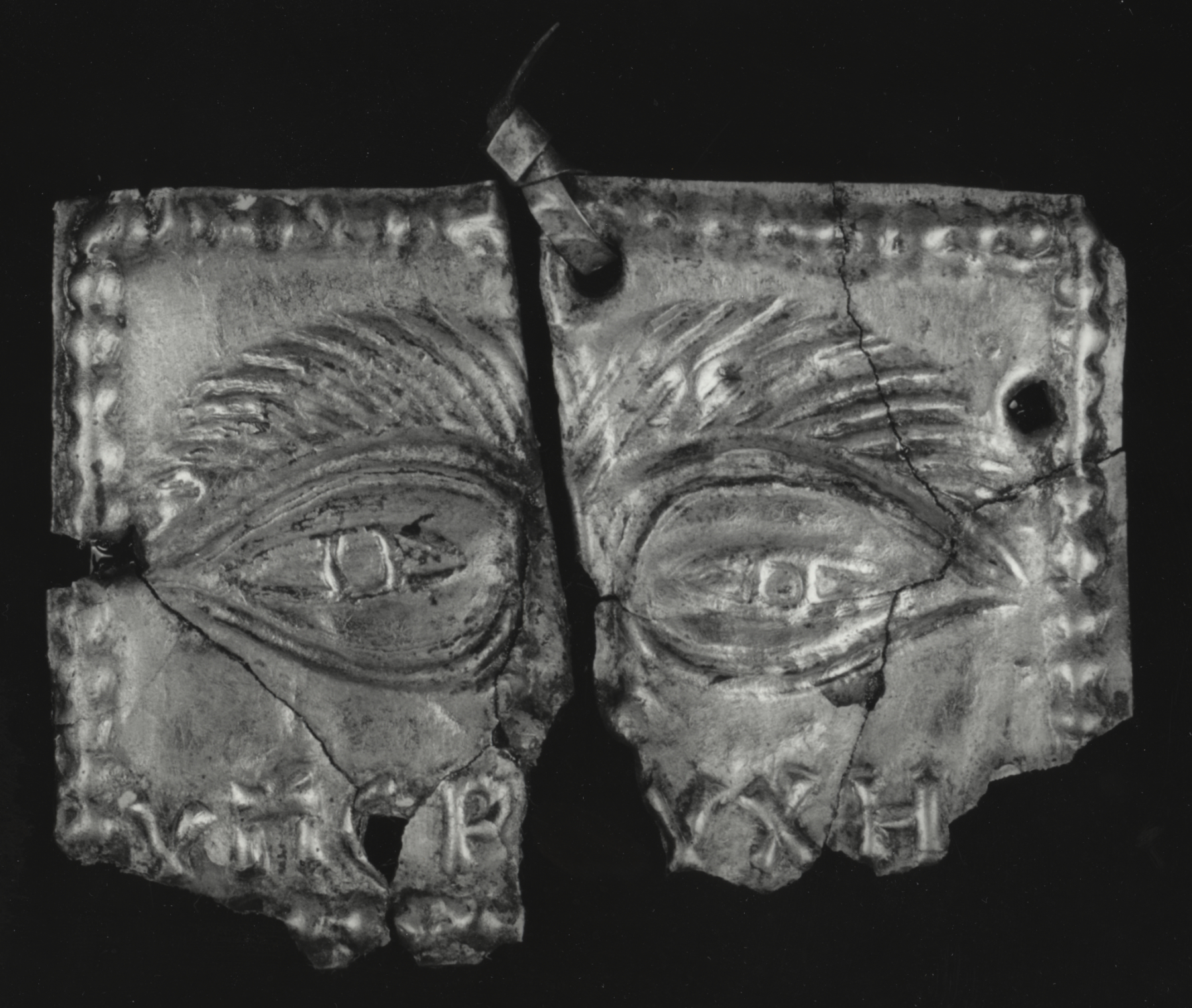Votive Plaque with Eyes
This thin silver piece shows a pair of almond-shaped eyes above an inscription that translates: "In fulfillment of a vow." The words identify the plaquette as a votive, or offering, left by pilgrims at a shrine in order to ask for divine assistance, or to give thanks for a miraculous cure (with reference to the healed body part). The practice of leaving votives at shrines continues to this day.
Inscription
Provenance
Provenance (from the French provenir, 'to come from/forth') is the chronology of the ownership, custody, or location of a historical object. Learn more about provenance at the Walters.
[Found near Ma'aret en-Noman, Syria, prior to 1945]; M. Henri Seyrig, Beirut [date of acquisition unknown], by purchase; Walters Art Museum, 1956, by gift.
Exhibitions
| 2010-2011 | Treasures of Heaven. The Cleveland Museum of Art, Cleveland; The Walters Art Museum, Baltimore; The British Museum, London. |
| 1986 | Silver Treasure from Early Byzantium. The Walters Art Gallery, Baltimore. |
| 1982 | Sacred Souvenirs: Byzantine Pilgrimage Art. Dumbarton Oaks, Washington. |
Geographies
Syria
(Place of Origin)
Syria, Ma'aret en-Noman (Place of Discovery)
Measurements
H: 1 1/8 x W: 1 1/2 in. (2.86 x 3.81 cm)
Credit Line
Gift of M. Henri Seyrig, 1956
Location in Museum
Accession Number
In libraries, galleries, museums, and archives, an accession number is a unique identifier assigned to each object in the collection.
In libraries, galleries, museums, and archives, an accession number is a unique identifier assigned to each object in the collection.
57.1865.563
Do you have additional information?
Related Objects





